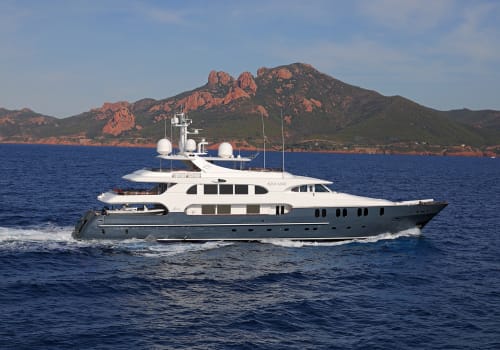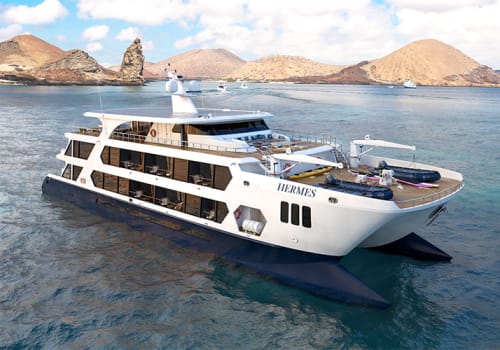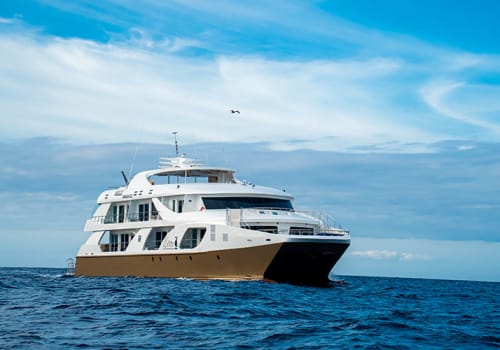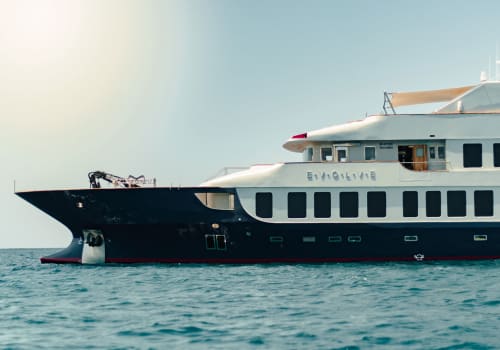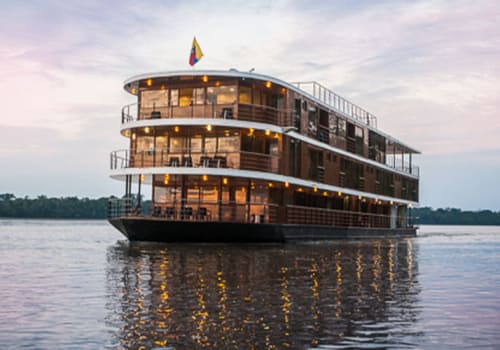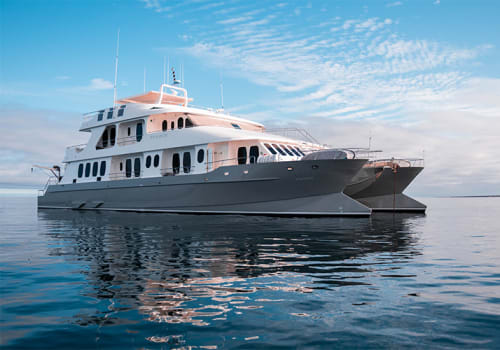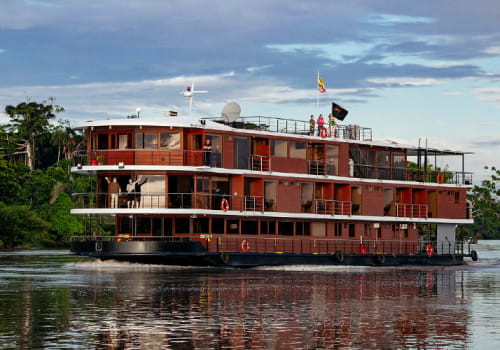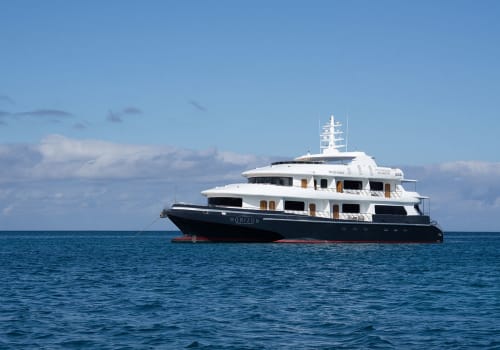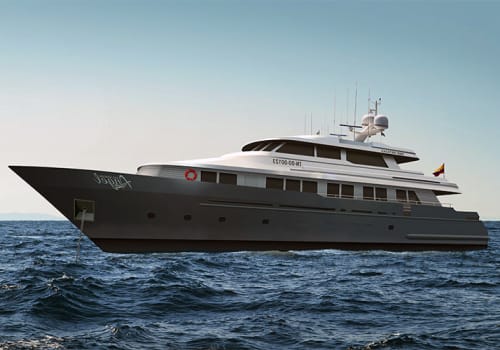Overview
The stylish 16-guest Galaxy Diver II offers boutique cruising in the Galapagos’ enchanted isles tailored to adventurers and nature enthusiasts alike. Despite her name, this exclusive yacht offers separate diving and naturalist itinerary options, and sails for longer than many other vessels, solely offering more immersive 8-day itineraries to the archipelago’s farthest—and most sought-after—reaches.
Life On Board
With just eight cabins this yacht ensures an exclusive and intimate atmosphere. Each cabin is elegantly designed, with all but one on the lower deck featuring large windows providing panoramic ocean views, while en-suite facilities and plush bedding add a touch of luxury.
The communal areas, including the dining room, bar, and shaded deck, provide inviting spaces to relax, socialize, or simply take in the breathtaking scenery. The solarium, featuring a Jacuzzi, is the perfect spot to unwind between excursions. The attentive nine-member crew, alongside a naturalist guide or two dive guides, ensures every need is met with warmth and professionalism.
Options For Divers and Explorers
The Galaxy Diver II offers two distinct eight-day itineraries: a diving itinerary for underwater explorers and a naturalist itinerary for those without diving experience seeking to discover the islands’ terrestrial wonders and marine environs in a softer manner.
The diving itinerary takes guests to premier dive sites like Darwin’s Arch and Wolf Island, where marine biodiversity is unmatched. Divers can expect encounters with schools of hammerhead sharks, manta rays, and the occasional whale shark, guided by two seasoned dive professionals and equipped with cutting-edge gear.
The naturalist itinerary showcases the islands’ unique landscapes and wildlife. Highlights include walking among marine iguanas at Fernandina, observing blue-footed boobies on Isabela, and snorkeling with playful sea lions at Rabida. Guided hikes to volcanic craters and visits to the Charles Darwin Research Station offer insights into the islands’ geology and conservation efforts.
Awe-Inspiring Exploration
Embarking on an odyssey into one of the world’s last pristine ecosystems aboard the Galaxy Diver II. Whether diving alongside majestic marine giants or walking in the footsteps of Darwin, you’ll create lifelong memories in a place where time slows down, and nature reigns supreme. Perfect for nature-loving adventurers, divers, or anyone seeking the extraordinary, this cruise promises unparalleled experiences that will leave you awestruck and inspired.
Itineraries & Prices
All itineraries are subject to change due to seasonal weather conditions (and resultant variations in river and tributary water levels) affecting accessibility to locations. Thus navigation routes, times and excursions may need to be modified at the cruise captain’s or your guide's discretion.
Accommodations
Social Areas
Suites & Cabins





Standard
All Standard Cabins are decorated with endemic local style and are equipped with lower beds, functional closets, air conditioning with climate control and reading lights. Cabins 6, 7, 8 and 9 can be triple.
Technical Information
Features
- Air conditioning
- Deck shower
- Pool / Jacuzzi
- Camera room
- WIFI available
- Souvenir shop
- Hot showers
- Charging areas for electronic equipment
Equipment
- Diving gear
- Diving platform
- Nitrox
- Snorkeling gear
- Wetsuits
- Stand up paddleboard
- Kayaks / Canoes



































